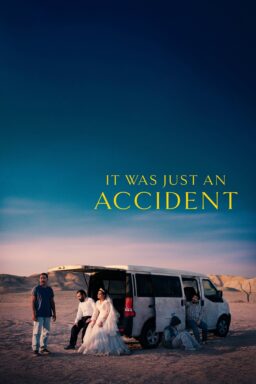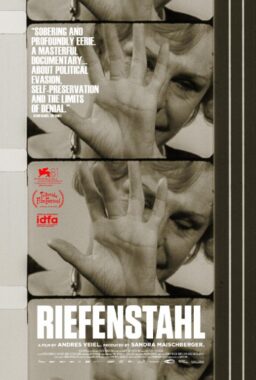
From Robert Horton, film critic, The Herald, Everett, WA:
How technical do you want to get about “opening shot”? Is the opening shot literally the very first thing that appears onscreen? Or is it the first shot proper, the thing that tells the people behind you to stop talking and pay attention? In the 1931 “Dracula,” the former is a wonderfully archaic credits plate with an art-deco bat, accompanied by a scratchy, mood-setting snippet of “Swan Lake” (without that bat and the music the movie that follows would somehow not be the same); the latter is the post-credits shot of a lusciously suggestive Transylvanian crossroads. Both count in “Dracula.”

Most movies now begin with credits over a shot, making it hard to define the beginning-proper (and making it hard for the people behind you to know when to shut up already). The credits play over the opening shot of the 1981 film “Cutter’s Way” (aka “Cutter and Bone”), a film very people have heard of, let alone seen, but which is nevertheless one of the key American films of the 1980s (a crucial film in connecting the post-sixties hangover and the corporate runamuck of the eighties).

The opening shot is dreamlike, stylized, drained of color—quite the opposite of the remainder of the film—and looks dead-center down a warm Santa Barbara street as an Old Spanish Days parade approaches the camera. It begins in black-and-white and bleeds slowly into color, and it’s in slow motion; the odd music by the late great Jack Nitszche seems to be running in slow motion, too. A band marches, banners wave, and front and center is a blonde in a white dress, like a bride, dancing in the Fiesta. Nothing really unusual about a blonde in a small-city parade, but when you watch the movie, you realize that this might be the kind of pretty girl who could end up dropped in a dumpster on a side street in the middle of the night because she made a bad decision about which rich guy to blow.

The camera has watched this, panning finally to accommodate the blonde’s sideways movement. The whole thing has the drowsy long-lens shimmer of midsummer. The blonde has gotten close enough to the camera to pass out of the frame, but as we peer at the people in the distance, now coming into focus, she abruptly passes by again—and as her white ruffled dress rustles by, the image in the background is wiped away and replaced by a whole new shot…if you like, the first shot proper of the story: an exterior, in the magic hour of dusk, of the outside of an unmistakably Southern California hotel.

The next shot—now night—reveals the name of the hotel in neon: El Encanto. (And it’s impossible to resist describing the next shot, another “first” in that it introduces us to our first main character: a close-up of the mustache of Richard Bone, as he neatly trims his facial hair with a woman’s electric shaver. He’s ending a one-night stand in his job as boat salesman/gigolo. And his character is nailed.)

Why is this opening shot—if we’ve decided on the slo-mo credits shot—such a great one for “Cutter’s Way”? This is a story about seeing clearly, for one thing, and the parade shot forces us to peer into a hazy, mundane image and search for something sinister within it. This night, Bone (Jeff Bridges) sees (or thinks he sees) a corporate fatcat at the scene of a murdered girl’s disposal. Bone lives with Alex Cutter (John Heard), a Vietnam vet with only one eye, one leg, and one arm, all working overtime, as is Cutter’s suspicious mind. Also very much in the suspended animation is Cutter’s wife, Mo (Lisa Eichhorn), whom the shiftless golden boy Bone loves, or thinks he does. Cutter becomes obsessed with proving that the businessman (Stephen Elliott) is the killer, even if Bone is increasingly uncertain about his initial recognition. It gives them all purpose. It gives them all a reason. Even though they might be wrong.
Czech filmmaker Ivan Passer directed “Cutter’s Way,” and has managed nothing as good since. The movie is a model of directing—of how a shot can carry a myriad of ideas above and beyond the marking-down of plot. In the business of tone, mood, light, pace, the film is just about flawless. (And by the way, Jeff Bridges, John Heard, and Lisa Eichhorn are in an ensemble zone that is breathtaking, and heartbreaking—nobody has ever done callow, self-loathing studliness the way Bridges does it here.)
It’s a film about ambiguity, and that opening shot delivers the mood. We’re not sure what we’re seeing, or how it fits into the story. But something mysterious has begun, and when that white dress wipes away one image and presents another, it’s like a curtain being pulled on a special place. Something is coming toward us—and this is also true in the film’s devastating final shot, where something comes toward us that utterly finishes the film but also opens up a world of possibilities. And by that point we can’t back away.
JE: Thank you, Bob! You nailed this haunting and unforgettable opening. And your description is so beautiful it had me tearing up, re-experiencing one of my most-loved movies. There was no better film in the 1980s than “Cutter’s Way” — although in some ways I think of it as the last of the great 1970s pictures. It belongs with movies about paranoia, dread and ambiguity like “Performance” and “Chinatown” and “Night Moves” and “Nashville” and “The Parallax View” and “The Conversation“…
One more note about the music, by the late Jack Nitzche. After the roar of the MGM Lion, there’s a quick snippet of ghostly mariachi music before the eerie round tones of the score begin to reverberate. (Sounds like it’s scored for bow saw, glass harmonica and mandolin.) The mariachi music swirls in and out of the mix as the woman in the white dress swirls in and out of the frame. Nitzche (the Stones and Neil Young producer who also did the music for “Performance” and “One Flew Over the Cuckoo's Nest“) is doing on the soundtrack what you describe in the shot — pulling you in and making you ask what you’re seeing/hearing, and what it might mean…










